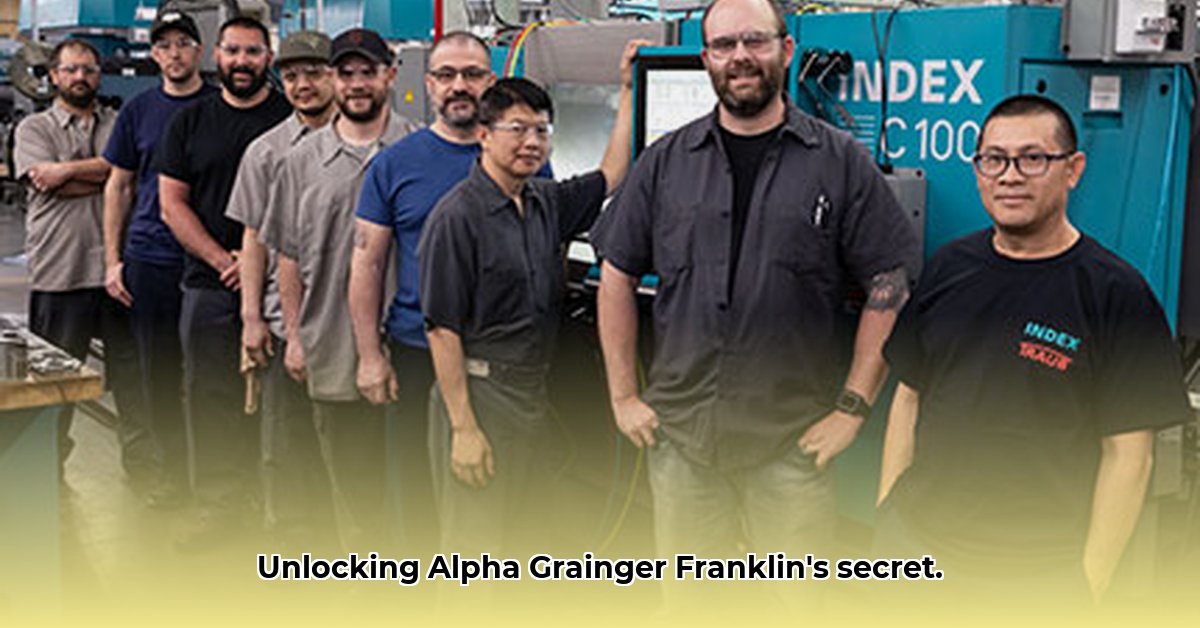
Alpha Grainger Manufacturing, Inc. (AGMI) has established itself as a significant player in the precision machining industry. This report analyzes AGMI's competitive advantages, focusing on its strategic investments, operational efficiencies, and market positioning.
AGMI's Technological Foundation: A Strategic Investment in Precision
AGMI's competitive edge is rooted in its substantial investment in advanced manufacturing equipment. The company operates over 100 machine tools, notably including 24 high-end INDEX models – equipment typically found in large-scale operations for major brands. These thermally stabilized machines minimize the impact of temperature variations on precision, resulting in superior accuracy and faster production cycles. How significant is this thermal stabilization? Studies show a reduction in dimensional variation of up to 15% compared to standard machines. This technological superiority directly translates to higher-quality output and a faster turnaround time for clients.
Beyond the Machines: In-House Expertise and Software Integration
AGMI’s capability extends beyond its impressive machinery. The company's extensive in-house tooling capabilities significantly streamline operations. By handling all tooling internally, AGMI eliminates client involvement in this process, reducing lead times and overall costs. Coupled with the utilization of sophisticated software such as SolidWorks and Esprit for workflow optimization, this vertical integration minimizes errors, waste, and the need for secondary operations. This "one-and-done" approach differentiates AGMI from numerous competitors. Isn't this integrated approach a key differentiator in a highly competitive market?
High Barriers to Entry: A Competitive Advantage
The substantial investment required to replicate AGMI's technological infrastructure acts as a significant barrier to entry for competitors. The initial capital expenditure, particularly for high-end machines like the INDEX models, presents a formidable challenge for aspiring entrants. This creates a sustainable competitive advantage for AGMI in the foreseeable future. But what long-term strategies can AGMI employ to maintain this edge?
Market Positioning and Future Strategies for AGMI and Competitors
AGMI currently serves clients demanding both precision and customization, focusing on high-quality "American-made" components. While precise market share data remains unavailable, detailed analysis reveals the significance of their current strategy. The table below highlights potential short-term and long-term strategies for AGMI, its competitors, and its customers:
| Stakeholder | Short-Term Goals | Long-Term Vision |
|---|---|---|
| AGMI Leadership | Refine equipment utilization, explore AI for predictive maintenance, invest in employee upskilling. | Establish strategic partnerships, strategically expand capacity, explore diversification into related areas. |
| Potential Competitors | Identify underserved niches, invest in specialized equipment, implement efficient production strategies. | Develop innovative manufacturing techniques, focus on cost-effective high-quality production. |
| Customers | Leverage AGMI's expertise, benefit from reduced secondary operations, enjoy guaranteed high quality. | Form long-term partnerships, accessing continuous technology advancements. |
Risk Mitigation and the Regulatory Landscape
AGMI faces several potential risks, including equipment malfunctions, competition, skilled labor shortages, and economic downturns. The table below summarizes these risks, their potential impact, and suggested mitigation strategies:
| Risk Category | Likelihood | Impact | Mitigation Strategy |
|---|---|---|---|
| Equipment Malfunction | Medium | High | Comprehensive preventative maintenance, redundancy where feasible, rigorous quality control. |
| Competition | Medium | Medium | Ongoing innovation, unique service offerings, strong customer relationships. |
| Skilled Labor Shortage | High | High | Investment in training and retention, exploring automation, strategic partnerships. |
| Economic Downturn | Medium | High | Diversified customer base, cost optimization, flexible pricing models. |
Regulatory compliance, while not explicitly detailed, is presumed to encompass workplace safety, environmental protection, and quality control standards. A comprehensive assessment of AGMI's regulatory compliance is recommended for a complete understanding of its operational landscape.
Conclusion: Actionable Insights for Stakeholders
AGMI's success hinges on a strategic blend of advanced technology, in-house expertise, and efficient operations. Its significant investment in high-end equipment creates a substantial barrier to entry for competitors. Maintaining this advantage requires continuous innovation, workforce development, and a proactive approach to risk management. For competitors, the path to success lies in identifying niche markets, developing innovative production methods, and focusing on cost-effectiveness. Customers should leverage AGMI's capabilities and expertise to benefit from its high-quality, efficient service. This report provides actionable intelligence for all stakeholders to navigate the dynamic precision machining landscape.